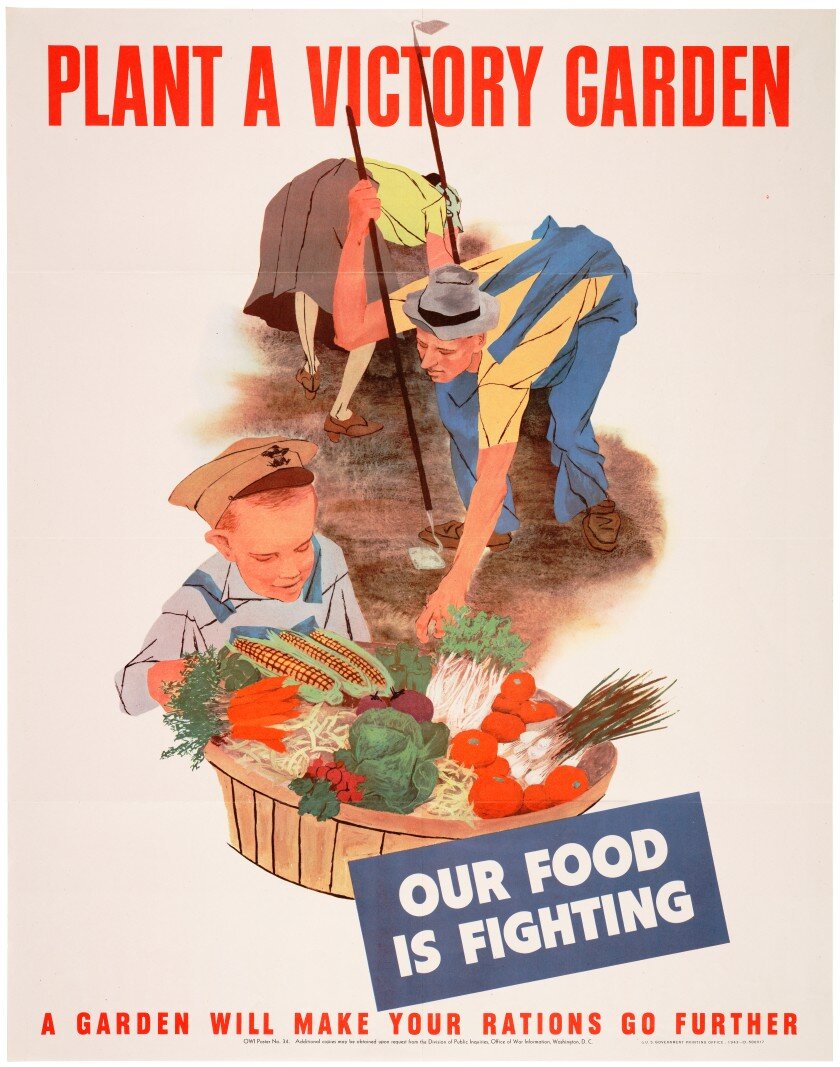Andy's Mom: Nebraska Victory Garden Guide for Newbies
At the behest of Soil Dynamics owner Andy Harpenau, Andy’s mother Jane is sharing a blog post about her multi-decade gardening experience. Enjoy! …
I read in the newspaper that with self quarantines in effect, there’s a movement to bring back the Victory Garden. Having been a gardener most of my life (even took gardening in 4-H as a child) and in the spirit of International Compost Awareness Week, I'd like to give a few pointers to the first timers.
Step 1: KEEP IT SMALL!
It's easy to get carried away with a garden. We get spring fever, go into a gardening center and want to try everything. Self-control is utmost.
Remember hopefully that in a few months we'll be back at work, coming home to cook a meal, keep a house, going on outings with the family etc., etc. Which means suddenly a garden could seem like a drudgery. Keeping it small, may keep one's interest.
Step 2: Location
It needs lots of sun, out of the way of heavy traffic, yet close and convenient enough so that you can easily water and not neglect it.
Step 3: Choose How To Start Your Garden
IN GROUND METHOD
Starting NOW, put down newspaper (3-4 sheets thick) or cardboard, end to end, filling a 8X8 foot area. Hold the paper down with several bags of top soil and a bag or two of our Soil Dynamics’ "Organic Matters" compost. After 3 weeks or so, the grass below should be dead. Spread the bags of dirt and compost over the newspaper or cardboard and dig up the area. A potato fork works well for this. You'll be glad you kept the garden small -- this is a lot of work! Break up the dirt clods, smooth out the soil and your garden is ready for planting.
ABOVE GROUND METHOD
Nail four boards, 2x12x8 brown treated lumber, into a square. Fill with Soil Dynamics’ "Raised Garden Blend.” It is ready to be planted.
Here’s The Pros and Cons With Each …
Next year, if you decide gardening isn't your thing, the in ground method, which is cheaper to start, can be reseeded and you have your lawn back. Or, if you want a larger garden, extra area can easily be added. And you can mow right up to the garden.
The above ground method is easier to start, but more expensive. It contains your garden better with the soil warming up faster to encourage earlier germination of your seeds. It will require weed whacking to keep the grass down around the outer edge. However, if you decide later not to have a garden, you'll have excess soil to cart off and four pricey pieces of lumber. If a larger garden is wanted, simply erect another above ground box.
Step 4: What to Plant
TOMATOES
Don't start them from seed as this should have been done in March indoors, as they take a long time to germinate and grow. Many stores sell "bedding plants," that can be planted immediately into a garden.
For a small garden, you'll want single plants, but several varieties. Buying a single plant is more costly, but normally they are bigger plants and well started.
If you're thinking salsa, there are several dual purpose tomatoes. The "Beefsteak" or similar variety is not only yummy sliced, but meaty with less juice so your salsa isn't too watery. One of my favorite tomatoes is "Celebrity," not as meaty, but has an incredible flavor. The heirloom varieties are usually tasty, but not very prolific. Here's where you can try one to two tomatoes for a test. You might find one you want to plant year after year.
PEPPER PLANTS
Peppers for that salsa! Maybe one each of bell pepper and Jalepeno. If you have a prolific crop, peppers freeze well for later use in winter salsa, pepper poppers or stuffed peppers. Again buy bedding plants.
With all bedding plants, it's wise to protect the new plants in your garden. The hot sun can stunt, burn and even kill the plants. Plastic containers, like milk and juice jugs with the bottoms cut off and housed around the plant, usually does the trick. I place tomato cages immediately around the plants, even the peppers. This keeps the "mini greenhouses" in place, until the plants are well rooted -- usually one to two weeks.
CUCUMBERS
Plant one "hill." This means place about six seeds, according to seed packet instructions, into one hole. Thin to three of the strongest, if all six come up. Don't buy cucumber bedding plants. Cucumbers easily grow from seed in the garden, and the seeds are good for several years. To contain the cucumber plant (they can vine out 6 feet), place a sturdy tomato cage over the hill and train the vines to grow up the cage. Your cucumbers will be easier to pick. Be prepared to share your crop with neighbors and family, as they can be overly productive. A "burpless" salad variety is a good selection.
BEANS
Green, stringless. Any variety will do. Plant maybe two short rows. Nothing better than cooked, fresh beans topped with Velveeta cheese, or, as my sister does, mixed with some chopped and fried, (along with some drippings, too!) bacon.
Step 5: Watch Out For Frost!
DO NOT plant your garden until the possibility of frost is over, usually mid-May. After your garden begins to grow, again place 2-3 sheets of newspaper around the plants, weighted down with grass clippings (make sure no chemicals are on the grass -- this can kill your garden). Mulching your garden will deter weed growth and keep moisture in the soil. If the season is dry, watering will be a necessity.



